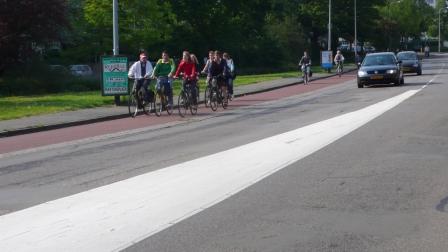19th March 2014
Learning to Drive
Last week there was a nasty accident outside our house. We heard a loud bang and looked out to see two cars with severe damage and a driver slumped over the steering wheel. Fortunately no-one was killed, but both drivers were lucky to escape with their lives.
The first person killed in a car accident was in London. In 1896 a woman was hit by a car travelling at less than 20 kms per hour. At that time there were very few cars on the roads. Now driving has become part of daily life. But so have the risks. Too many people are driving themselves to an early grave.

Every 30 seconds someone somewhere in the world dies in a car crash; and ten are seriously injured. Last year over 1.3 million people were killed in car accidents worldwide; and over 50 million people were left disabled. Half the victims were pedestrians, cyclists or motorcyclists. The World Health Organisation estimates that the death toll could rise to nearly 2 million by 2030 as more roads are built and more cars sold.
Each death and injury is an avoidable tragedy. And the cost of this carnage is felt much more starkly in poor and middle-income countries where medical bills, lost output and vehicle damage can amount to as much as 10% of GDP. The impact on a country’s growth and development is made worse by the fact that most deaths and injuries are among young men, often the main breadwinners.
How can the trend of rising deaths and injuries be reversed? There is plenty of good practice and experience for countries to draw on.
First: awareness-raising. That means educating people to understand that a car is not only a utility; it is also a lethal weapon. And drumming home the message that speed and recklessness kills; keep to the speed limit; don’t tailgate. I recall a slogan on every lamppost in a suburb of London: “Kill Your Speed; Not a Child.”
I also recall an advertisement which used a camera moving down a dark corridor against the background noise of a pub full of happy, laughing voices. Someone was urging a friend to “just have one more”, meaning have another drink. The camera then burst into a kitchen where a mother was urging her son to “just have one more”. But this time it was spoonful of food. He was in a wheelchair, crippled by an accident caused by drinking one more.
Second: infrastructure. Investing in safety features for roads can reduce accidents. Simple devices like speed bumps, proper pavements for pedestrians and separate lanes for bicycles are cheap and effective. Better-built cars, airbags, and car seats for children have helped to reduce the risk of death and injury.

Third: enforcing the law. For every 1km/h reduction in average speed, there is a 2% reduction in the number of crashes. Proper use of seatbelts cuts the risk of death by 61%. Using helmets reduces the risk of head injury for motorcyclists by 45%. Most countries have laws relating to these factors. But enforcement is weak. Enforcing the laws with penalties – including driving bans – would limit deaths considerably.
In Europe many countries have cut the number of deaths on the road dramatically in recent years, despite the massive increase in traffic. Sweden has halved the number of road deaths since 2000 and in 2013 only one child under the age of 7 was killed in a crash. By active advertising and police enforcement the number of fatalities in Britain has fallen from 5,500 per year in the 1980s to 1,754 in 2012.
That is 2.75 deaths per 100,000 people. In case you are wondering, the comparative figure for Jordan is 22.75 per 100,000.
Dear Peter ,
thanks a lot for yr. lines – but esp. for the 1st. photo ! For , after I ‘ve read yr. “alarming” report , I do think that for some persons such pics. are warning them more as every word. Well, if already in 1896 people were killed after a hit by a car so is it a wonder that every “30 sec. (!!!)” someone ‘cross the world is finding an early death in a car-crash ? Nevertheless : I only would have wished , that you would have more written ´ bout the big problem of drinking alcohol while driving. Guess , a lot of deadly car-crashes wouldn ‘t have happened at all if the drivers would have been “sober/clean”. So , “…enforcing the laws esp. in re. of “ALC.”or “DRUG ” abuse could be a 1st. solution. In Stuttgart , we do have traffic-signs with the slogan : “You drink, you drive, you lose !/ du säufst, du fährst, du verlierst!”.
Best wishes & take care, liebe Grüßle , Ingo-Steven, Stuttgart